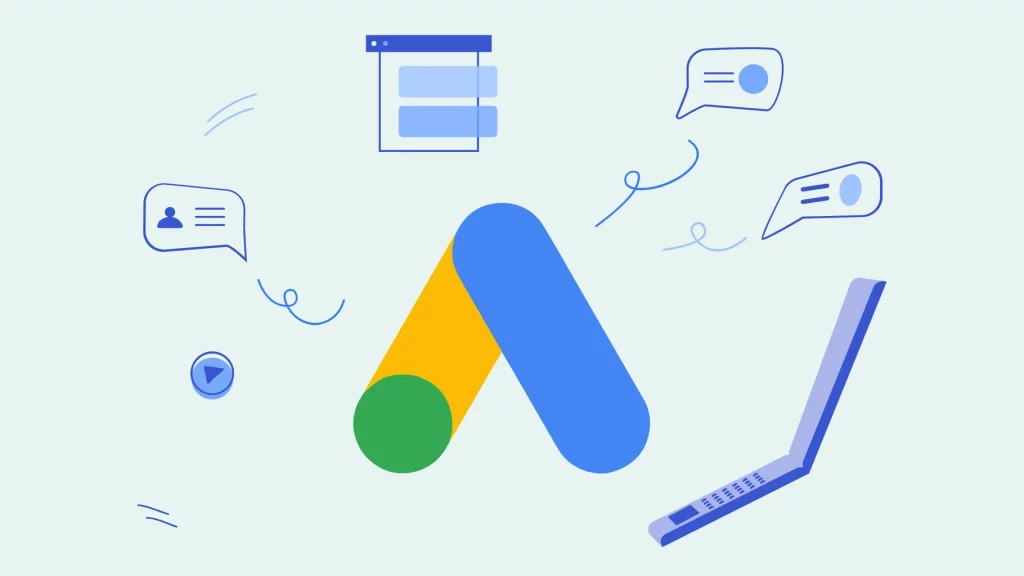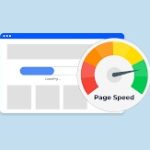In the fast-paced world of digital advertising, mastering Google Ads is critical for businesses seeking higher conversions. With the right strategy, you can elevate your search campaigns, target the ideal audience, and optimize everything from bids to landing pages. Whether you sell physical product lines or offer specialized services, Google Ads provides the reach, performance data, and robust reporting features needed to refine your approach in real time. In this blog, we’ll cover how to leverage various campaign types, implement effective bidding strategies, and refine your landing experiences—ensuring you stay ahead of competitors and secure a higher return on investment.

Types of Google Ads
Search Ads: Benefits and Best Practices
Search ads appear at the top of Google Search results, capturing users actively looking for relevant products or services. These text-based ads typically utilize search queries and relevant keywords to match user search intent. A well-structured approach involves negative keywords to avoid irrelevance, long-tail keywords for specificity, and bidding strategies tuned to your Campaign goal. By aligning your ad text with user signals—like location or device type—you increase click-through rates and minimize budget wastage.
Best practices also include using Responsive search ads to dynamically test multiple headlines and descriptions, employing Ads Personalization to tailor messages for different segments, and leveraging a robust list of additional keywords for broad coverage. Tracking conversions from search is crucial to measure success in real time, especially if you tie your campaign to advanced analytics or the Google Marketing Platform.
Display Ads: When to Use Them
Ideal for brand awareness and retargeting, Display Ads show up on websites and mobile apps across the Display networks, featuring image or banner ads that visually engage. These can run in programmatic advertising contexts and can re-engage site visitors who didn’t convert during their first visit. For instance, if someone viewed your “ads for cameras,” you can display product banners to them later using remarketing lists.
Display campaigns typically have lower CPC but also lower conversion rates due to less explicit purchase intent. However, they’re perfect for capturing potential customers early in the customer journey or reminding them about special offers. Including high-quality images, square images, or interactive content can prompt users to explore more about your brand.
Shopping Ads: Ideal Use Cases
Designed primarily for eCommerce, Google Shopping ads integrate with your product feed from a merchant center account. They highlight product details like price, image previews, and short descriptions—letting consumers compare items before clicking. This can increase transparency and reduce unqualified clicks. By merging product data with the user’s relevant search queries, Shopping ads often have strong engagement with commercial-intent searchers.
Performance Max or Discovery ads can complement your Shopping approach by hitting multiple digital channels—like the Google Display Network or YouTube—ensuring your physical product lines get maximum visibility. This synergy is especially beneficial for retailers with extensive catalogs, as it automates matching between your product feed and user signals.
Video Ads: Engaging Your Audience
Video ads—like Non-skippable in-stream ads or those on the video partners network—are excellent for storytelling and emotional branding. Ideal for tutorial content, product demos, or brand highlights, they can run on YouTube or within apps. By using a strong CTA, you can push viewers to a landing or encourage app downloads. Coupled with advanced analytics, video campaigns reveal how your audience interacts with video content at different watch durations.
This format suits businesses seeking brand recall, or to demonstrate product benefits that text-based ads might struggle to convey. Coupled with a robust “ads purposes” approach, video ads can serve as a powerful tool in your marketing ecosystem.
Writing Compelling Ad Copy
Importance of Clear Messaging
With Google Ads, you have limited text space to convey your brand’s value. Crisp, direct language helps prospective customers quickly grasp what you offer. Keywords in the text—like “Free Shipping,” “Expert Consulting,” or “Limited Time Offer”—help confirm relevance to searchers. Without clarity, you risk losing user interest in a matter of seconds.
Using Actionable Language
Inserting verbs like “Buy,” “Shop,” or “Contact” in your headlines or descriptions encourages actions users can take immediately. With so many ads competing for attention, a strong imperative phrase can nudge your potential customers into clicking. Pair these commands with the promise of a benefit—like “Buy Now to Save 20%”—to tighten the emotional appeal.
Incorporating Keywords Effectively
Weaving relevant keywords into your ad text boosts both quality and ad rank, especially if they match user queries. Tools like Google AI can generate suggestions or refine your list of additional keywords. However, avoid stuffing ads with too many terms, which leads to unnatural or forced messaging. Instead, choose 1-2 effective keyword phrases per ad, ensuring that your text remains easily digestible.
Crafting Engaging Headlines
The headline is your first impression. A strong, benefit-driven or problem-solving angle can yield higher click-through rates. If your brand name is well-known, featuring it can reinforce credibility. Including a feature or unique selling proposition (e.g., “24/7 Service,” “Eco-Friendly Materials”) can pique curiosity. Headlines that connect with search intent often outperform generic ones, so try matching user queries with your brand’s solutions.

Utilizing Ad Extensions
Overview of Ad Extensions
Extension features—like Sitelink, Callout extensions, or Structured Snippets—add extra real estate to your ad without additional cost. They bolster the user’s understanding of your offer, driving better CTR and, ultimately, higher conversion rates. Google’s synergy of manual and dynamic extension options ensures your ads appear relevant across different device types, from desktop to mobile devices.
Sitelink Extensions: Maximizing Real Estate
Sitelinks are clickable text-based sections that direct users to different landing pages. For instance, you can promote a dedicated landing for “New Arrivals” or “Consultation Booking.” By giving them quick paths to deeper content, you reduce friction. The best strategy is to link each sitelink to a page with a clear call-to-action, ensuring you’re pushing them down the funnel to relevant products or landing experiences.
Callout Extensions: Highlighting Unique Offers
Callout extensions let you list short, punchy bullet points about your brand or product—like “Free Shipping,” “Money-Back Guarantee,” or “Over 500 5-Star Reviews.” These micro-statements can boost your ad’s credibility and help differentiate your brand from competitors. This approach is especially beneficial in verticals where potential customers compare numerous providers at once.
Structured Snippet Extensions: Providing More Information
Sometimes called “structured snippets,” these highlight product categories, service types, or brand attributes in a short, standardized format. For instance, if you sell multiple lines of apparel, you could list “Men’s, Women’s, Kids’.” It’s a quick way to show variety or depth without cluttering your main ad copy. They’re particularly effective for large or multi-faceted businesses with broad product or service ranges.
Setting Up Audience Targeting
Understanding Audience Segmentation
Defining your target audience means slicing your market into segments based on demographics, psychographics, or usage behaviors. This segmentation helps deliver the right messaging to each group. For instance, business owners might see ads highlighting your B2B services, while everyday consumers see ads about your consumer goods. This approach ensures your marketing budgets are spent effectively.
Custom Audiences: Creating Tailored Campaigns
Using custom audience features in Google Ads can refine your targeting even further. For instance, you can build lists of users who have visited a specific page or performed a certain action on your site. Combine that data with Performance Max or advanced attribution tools to deliver hyper-personalized ads. This approach fosters better conversions since each user sees relevant, timely offers.
Remarketing: Re-engaging Potential Customers
Remarketing campaigns let you target site visitors who didn’t convert on their first visit. By placing a tracking code (like the Google Tag), you can follow them around the Display networks or even on YouTube with carefully timed ads. This powerful approach reactivates warm leads. For best results, rotate ads to prevent ad fatigue and consider segmenting different remarketing lists based on user actions (e.g., “abandoned cart” vs. “visited contact page”).
Analyzing Performance Metrics
Return on Ad Spend (ROAS): Measuring Success
ROAS—calculated as revenue from conversions / cost of ad spend—tells you how profitable your campaigns are. If your ROAS is below your threshold, it may be time to tweak your bidding strategies, negative keywords, or landing page experience. Many advertisers tie conversion tracking to revenue events in Google Ads or to Google Analytics for real-time data on how each ad spend translates to actual sales.
Click-Through Rates (CTR): Understanding Engagement
CTR signals whether your ads resonate with users. Low CTR may indicate irrelevant keywords or unappealing ad copy. Even if your ad ranks first, a poor CTR can eventually lower your ad rank by harming your overall quality score. If your CTR is high but conversions remain low, the cause could be an inconsistent or confusing landing environment.
Conversion Rates: Tracking Effectiveness
Ultimately, conversion rates—the percentage of ad clicks that lead to a desired action—reveal how well your campaign is turning clicks into customers. By integrating advanced analytics or data from the Google Marketing Platform, you can pinpoint user paths and refine your funnel. If your conversion rates slip, re-check your messaging, test alternative calls to action, or analyze your site’s user flow to reduce friction.
Advanced Strategies for Optimization
Leveraging AI Tools for Campaign Management
Google AI—through Smart bidding or automated targeting—can streamline daily tasks like adjusting bids based on device, location, or search context. By letting AI handle routine optimizations, you free up time for strategic decisions. However, keep a watchful eye on your data: if your campaign yields subpar results, you might reintroduce manual oversight or refine your bidding constraints.
Utilizing Script Automation for Efficiency
Script automation can address tasks like pausing ads underperforming after certain thresholds, adjusting your daily budget at peak times, or generating daily performance reports. This approach suits large or complex accounts with multiple campaigns, ensuring real-time changes without the business owner’s constant manual involvement. For example, you can create a script to pause your ads during non-business hours if your service isn’t relevant 24/7.
A/B Testing: Experimenting for Better Results
A good digital marketing strategy hinges on continuous improvement—A/B testing your headlines, visuals, or even entire ad groups. By testing two variations and measuring the difference in metrics (like CTR or conversion rate), you can discover which approach resonates better with your audience. This iterative approach fosters consistent growth and ensures you adapt to shifting consumer behaviors or new competitor tactics.
How LinkLumin can Help?
At LinkLumin, we specialize in data-driven optimization for Google Ads across various types of campaigns—Search Ads, Display networks, Video ads, and more. Our experts harness the power of advanced analytics, bidding strategies, and robust tracking to align each campaign with your unique business vision. From refining your landing environment to maximizing Performance Max campaigns, we help ensure that each click translates into valuable results. We also provide in-depth analysis of user behavior, harnessing tools like Google Analytics to discover how best to engage mobile devices or specific segments, leading to better conversion rates and higher overall performance. LinkLumin employs multiple advertising channels to run successful advertising campaigns

Conclusion
Optimizing your Google Ads for higher conversions is an ongoing endeavor that merges data analysis, strategic keywords, and meaningful audience segmentation. From using search ads with carefully chosen negative keywords to retargeting on the Display or video networks, each tactic plays a crucial role in driving better leads and purchases. Keep refining ad copy, testing different bidding methods, and leveraging advanced features like Custom Audiences or Performance Max. By continuously evaluating performance metrics—CTR, conversion rates, ROAS—you’ll uncover new opportunities to enhance your digital advertising approach and elevate your brand’s success.
Tags




